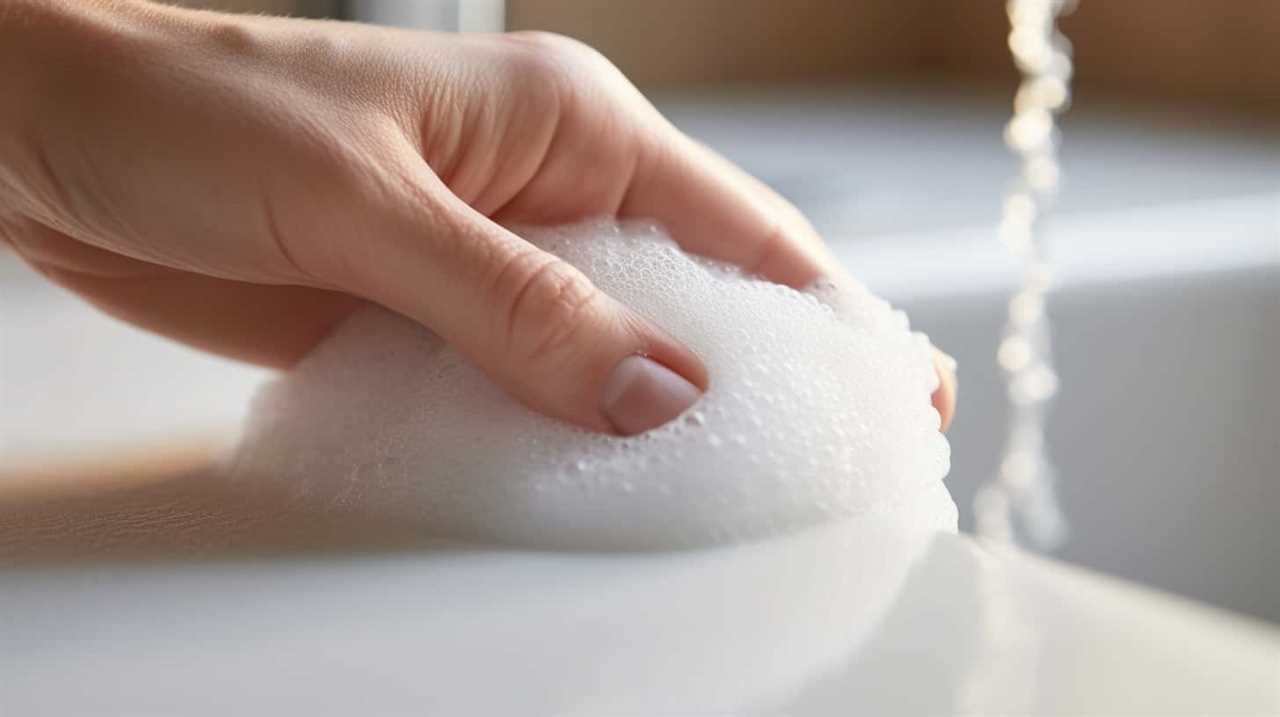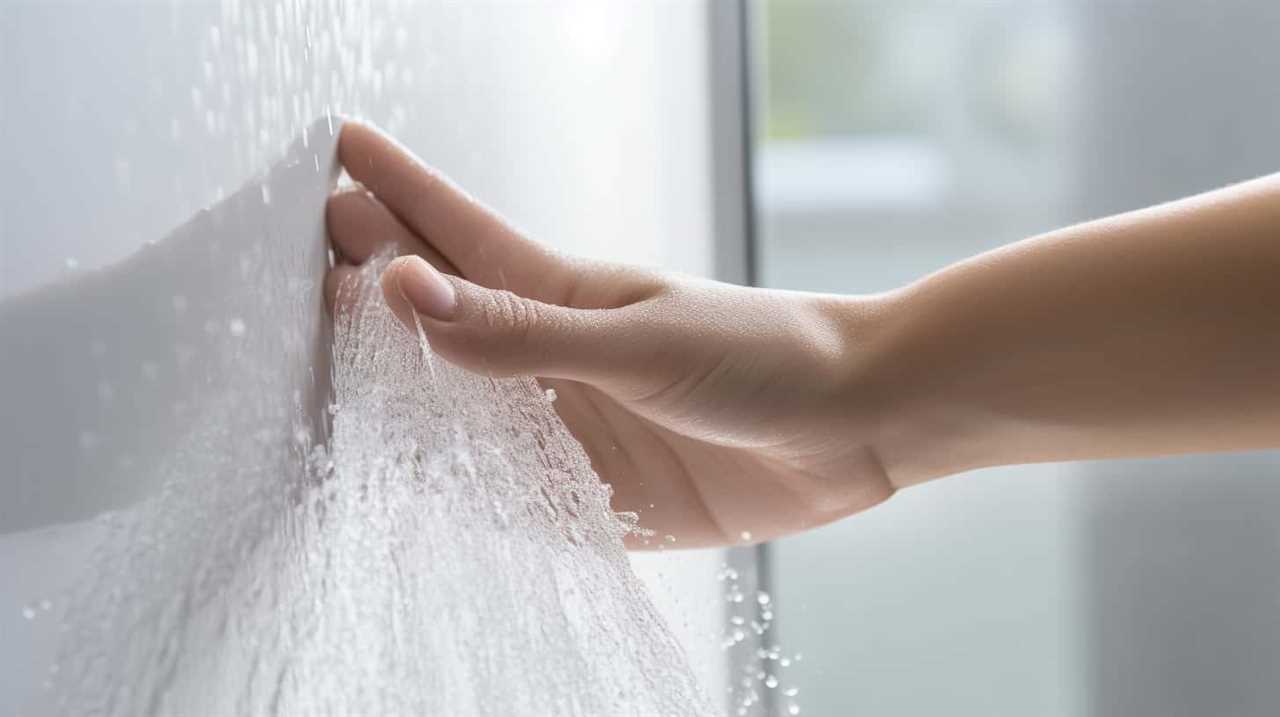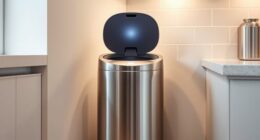Have you ever walked into your bathroom and been greeted by a foul smell that makes you recoil? It’s a common experience for many of us.
But fear not! In this article, we’ll unravel the mysteries behind why our bathrooms sometimes smell less than fresh. From poor ventilation to clogged drains and everything in between, we’ll dive into the technical details and equip you with the knowledge to tackle these stinky situations with mastery.
Key Takeaways
- Poor ventilation is a major cause of lingering odors in the bathroom.
- Mold and mildew growth can be attributed to inadequate ventilation and high humidity levels.
- Clogged drains and pipes can lead to foul-smelling gases and should be promptly addressed.
- Issues with toilets, such as worn-out components or improper venting, can contribute to bathroom odors.
Poor Ventilation
Poor ventilation in our bathroom can cause unpleasant odors to linger. Ventilation problems are often the culprit behind these lingering odors. When our bathroom lacks proper ventilation, the air becomes stagnant, allowing odors to accumulate and remain trapped. This can be particularly troublesome in bathrooms with high humidity levels, as moisture in the air exacerbates the problem. Adequate ventilation is crucial for effective odor control and maintaining a fresh bathroom environment.
To address ventilation problems, it’s important to ensure that the bathroom is properly equipped with ventilation systems such as exhaust fans or windows. These systems help to remove stale air and replace it with fresh air from outside. Additionally, humidity control is essential in preventing odors from lingering. High humidity levels create a favorable environment for mold and mildew growth, which can contribute to foul odors. By controlling humidity through proper ventilation and the use of dehumidifiers, we can effectively combat odor issues in the bathroom.

Now, let’s delve into the next section about ‘mold and mildew growth’ and its connection to bathroom odors.
Mold and Mildew Growth
Another factor that contributes to the unpleasant odors in our bathroom is the growth of mold and mildew. Mold and mildew thrive in moist environments and can be commonly found in bathrooms with poor ventilation or excessive humidity.
Here are some key points to consider regarding mold and mildew growth:
- Mold and mildew can pose significant health risks, especially for individuals with respiratory conditions or weakened immune systems.
- Mold and mildew can cause allergic reactions, respiratory issues, and even infections.
- Prevention methods include ensuring proper ventilation in the bathroom, using exhaust fans or opening windows to reduce humidity, and regularly cleaning and drying surfaces to prevent moisture buildup.
Clogged Drains and Pipes
To further address the issue of unpleasant odors in our bathroom, one common culprit is clogged drains and pipes. When our sink drain becomes clogged, it can lead to stagnant water and the accumulation of organic matter. This stagnant water becomes a breeding ground for bacteria and other microorganisms, which produce foul-smelling gases like hydrogen sulfide, also known as sewer gas.

The odor from sewer gas can be quite pungent and can permeate our bathroom, causing discomfort and embarrassment. It’s important to address clogged drains promptly to prevent the buildup of organic matter and the release of sewer gas.
Regular maintenance, such as using drain cleaner or calling a professional plumber, is crucial in keeping our drains clear and our bathroom smelling fresh.
Toilet Issues
When our bathroom smells, one potential source of the odor is toilet issues. If you’re experiencing unpleasant toilet odors, here are a few possible culprits to consider:
- Worn-out wax ring: The wax ring seals the connection between the toilet and the floor drain. Over time, it can deteriorate, allowing sewer gases to escape and cause bathroom odors.
- Leaking toilet tank: A leaking toilet tank can lead to stagnant water, which can produce foul smells. Check for any cracks or worn-out components that may be causing the leak.
- Improper venting: If your toilet isn’t properly vented, it can create a vacuum that pulls sewer gases into the bathroom. Make sure the vent pipe is clear of any obstructions and properly connected.
Improper Cleaning Methods
One potential cause of bathroom odors, in addition to toilet issues, is improper cleaning methods. Using the wrong cleaning products or not cleaning the bathroom thoroughly can result in lingering odors.

When it comes to tackling bathroom odors, it’s important to use the right cleaning products that are specifically designed for removing stains, bacteria, and odors. These products often contain enzymes or bacteria that break down organic matter and eliminate odors at the source.
Additionally, it’s crucial to clean all areas of the bathroom, including the toilet, sink, shower, and floor, as these can be breeding grounds for bacteria and unpleasant smells.
Regular and thorough cleaning using appropriate cleaning products will help keep bathroom odors at bay.
Frequently Asked Questions
How Can I Prevent Bathroom Odors From Spreading to Other Parts of My Home?
To prevent bathroom odors from spreading, we maintain cleanliness by regularly cleaning surfaces, disposing of waste properly, and ensuring proper ventilation. By following these steps, we can keep our bathroom smelling fresh and prevent odors from affecting other parts of our home.

Are There Any Natural Remedies or DIY Solutions to Eliminate Bathroom Odors?
There are natural remedies and DIY solutions to eliminate bathroom odors. We can use baking soda, vinegar, lemon juice, or essential oils. These options are cost-effective, environmentally friendly, and easy to implement.
What Are Some Common Mistakes People Make When Trying to Address Bathroom Odors?
Common misconceptions about addressing bathroom odors include relying solely on air fresheners and neglecting proper ventilation. It’s important to understand that proper ventilation, such as opening windows or using exhaust fans, is key to eliminating unpleasant smells.
Can Using Scented Candles or Air Fresheners Effectively Mask Bathroom Odors?
Using scented candles or air fresheners may temporarily mask bathroom odors, but they won’t effectively eliminate the source. It’s like putting a band-aid on a wound without treating it properly.
Are There Any Health Risks Associated With Persistent Bathroom Odors?
Persistent bathroom odors can raise health concerns due to the potential for bacteria growth. Understanding the causes of these odors is essential in maintaining a clean and healthy bathroom environment.

Conclusion
In conclusion, it’s crucial to address the underlying causes of a smelly bathroom.
By ensuring proper ventilation, tackling mold and mildew growth, unclogging drains and pipes, addressing toilet issues, and employing proper cleaning methods, you can eliminate unpleasant odors and maintain a fresh and clean bathroom environment.
Just like a breath of fresh air, these actions will breathe new life into your bathroom, leaving it smelling fresh and inviting.










